A bit about Tuva
Northwest of Mongolia, in the Russian Federation, is the autonomous region formerly known as Tannu-Tuva. Its native people are related, ethnically and culturally, to Mongolians. They practice Buddhism and shamanism, often blending the two religions in daily practice.
The area, being part of Siberia, is also populated by European Russians, partly due to the exile there of their ancestors. They make up roughly one-third of Tuva’s population of 370,000 and are primarily Russian Orthodox. Both Russian and Tuvan are spoken there.
- Tuvan musicians.
- Tuvan throat singers.
- Group of Tuvans at Khogzhumchu
Tuva is a pastoral land, and the ethnic Tuvans remain seminomadic. Geographically, Tuva is the heart of Asia.
If Tuva is known at all in the outside world, it is for throat singing. This very unusual singing technique involves a single vocalist producing two and sometimes three distinct tones simultaneously. In the 20th century, Tuva was also known among collectors for its triangular postage stamps.
Historically, Turkic, Mongol, Chinese and finally Russian influences predominated as those peoples ruled the Tuvan empire in turn. Stalin formally annexed Tuva in 1944. After the fall of the Soviet Union, Tuva declared itself an independent republic, electing its first president in 1991.
What to expect in Tuva
Looking back on the trip, we realized that we had used numerous modes of transportation, traveling by train, bus, minivan, plane, tugboat, taxi, raft (river-powered ferry), 4-wheel drive vehicle, ski lift, camel, horse and even by foot. This exemplifies the trip itself — something different, new and interesting every day.
- Tuvan man and his sons.
- Tuvan landscape, with traditional yurt.
- Group of Tuvan women on horseback.
- Group of Tuvans at Khogzhumchu
- Tuvan wetlands.
- Tuvan shaman smokes a pipe.
- Yenisei River in Tuva.
- Tuvans riding horseback.
- Tuvan horseman.
Tuva is not for everyone. But for the truly adventurous, it can be rewarding, educational and extremely memorable.
Why travel to Tuva? Well, beyond “Because it’s there,” I became interested in the area over a decade ago for several reasons. First, its exotic name conjured up intriguing images. Secondly, its remote location lends it mystique, similar to that of Timbuktu.
Hearing about physicist Richard Feynman’s failed quest to visit Tuva also piqued my interest, his dream poignantly on display as he drove the streets of Cal Tech sporting personalized California license plates proclaiming “TUVA.” Finally, I knew I had to get there after seeing Paul Pena’s award-winning documentary, “Genghis Blues.”
Travelers should be aware of what is involved in visiting Tuva. They should not be easily frustrated by the hardships inevitable when traveling in such remote, difficult locations. We experienced lost luggage and delayed flights as well as hotels without hot water or working elevators and with few to no amenities.
Martin, our multilingual and very capable tour manager, told us of one former Soviet hotel that had no doors to its rooms — his group placed chairs in the open doorways before retiring for the night!
Indoor plumbing is rare in the area, available only in cities. On our daily excursions, we became well acquainted with outhouses that varied greatly from really clean (not so often) to disgusting. Flexibility is the key! And we all agreed that the smiles of the people more than made up for any temporary inconveniences.
Getting to Tuva
- Open plains of Tuva.
- Tuva at sunrise.
- View of Tuva from viewpoint.
- Crystal clear Tuvan lake.
- Rolling mountains of Tuva
- Small Tuvan settlement near the lake.
Our journey began with a 2,000-mile flight over the Ural Mountains from Moscow to Asia, then an overnight in Abakan (Russia). From there, we drove to the village of Shushenskoye for a night.
Shushenskoye is of interest because Lenin spent three years in exile there. The little community where he once lived is now a very interesting ethnographical museum. We were fascinated by the well-preserved houses and their furnishings as well as by the lively cultural show put on by the people working there. It felt authentic.
The Asian part of Russia is not a popular tourist destination, so the people there are not yet jaded or spoiled by tourism. Their enthusiasm and friendliness were delightful.
The next morning, we headed for our true destination, Tuva. Though it was July, we crossed mountains with patches of snow still on their peaks before crossing the border. We descended to the valley floor — where the Little Yenisei and the Big Yenisei join to form the much larger Yenisei River — to the small capital city of Kyzyl (rhymes with Brazil) on its bank.
Our hotel there, Odugen, became a central hub for the next week’s excursions. The old KGB building, replete with antennas reminiscent of the Cold War days, was across the street. It is now the FSB (Federal Security Bureau) building — basically the same people with a new name. A walk of two blocks took us to an obelisk marking the exact geographical center of Asia.
In the city, we visited markets, with a plethora of items and friendly locals, and a Buddhist monastery, where we met with the local lama. Though the beautiful new cultural and natural history museum was not yet open, we found the old museum to be well worth a visit. We shopped at various stores, including a soapstone carving workshop and a native dress shop.
At a large bronze statue of a Tuvan cowboy on a hill overlooking Kyzyl, we met with a local shaman for a blessing ceremony. Her dress and accoutrements, including a coat, feather headdress and drum, were sharply reminiscent of the Native American culture, as was the ritual itself.
For our meals in the city, we ate mostly in restaurants, where the food was always good. A special treat one night was a meal in the home of Tuvan professionals, a doctor and a professor at the local university.
One of our day trips from Kyzyl took us to Turan, locally known as the Valley of the Tsars due to the large number of Scythian burial mounds in the area. These mounds have yielded, to date, over 20 kilos (44 pounds) of decorative gold artifacts, which can now be seen only at the Hermitage in St. Petersburg.
One morning, we took an enjoyable 10-mile excursion up the Big Yenisei on an old tugboat.
In the middle of our visit, we went on a 2-day excursion into the forest — well worth the discomfort of the long drive. We kept our rooms in Kyzyl, as there was no demand for them from other travelers, and took only what we needed for the two days.
We drove southeast to Sareksep, where the paved road ended. Continuing on a winding, rutted, dusty path for 50 more miles, we came to the Little Yenisei River. There, honking alerted the ferry operator on the other side.
Crossing on the ferry was a unique experience. It was no more than a rough raft, big enough for only one of our minivans at a time, and was powered completely by the river’s current. The ferry operator maneuvered a large wooden rudder so that the river’s flow pushed against the pontoons under the raft and thus propelled it forward.
- The Little Yenisei River.
- The Little Yenisei River.
- The Yenisei River, Tuva.
A metal cable hooked the raft to another cable that stretched from one bank to the other. This prevented us from being carried downstream. It was a fascinating and very pleasant experience to cross the river without any mechanical noise detracting from the beauty of the Siberian wilderness.
After our crossing, we followed the river upstream for an hour to our rustic camp, Oina, on its bank. There we found small, sturdy log cabins, with no electricity or running water, set in a beautiful forest.
This camp, a getaway for wealthy Russians, boasts a traditional banya (sauna), which was fired up every evening. Traditionally, one should spend half an hour sweating in the extremely hot banya, following that with a plunge in the freezing, ice-melt water of the river, repeating the sequence three times.
Some of our group spent time both evenings in the banya. Others did not, choosing simply to bathe (very quickly) in the icy river water. By morning, water left in pails in the banya overnight had warmed up so that some basic ablutions could be performed in relative comfort.
Our meals, always tasty and well prepared, were brought from a local village and served to us in another log building.
Some members of our group were interested in birds, and they were thrilled with the abundance and variety of birds they saw in the forest. Wildflowers also were abundant.
While in the forest, we visited two villages of Old Believers, a sect that broke away from the Russian Orthodox Church some 400 years ago. They still practice their old ways, living apart from other Russians. We ate lunches in these Old Believer villages, spending time learning about their way of life.
In the cold of winter, the men of the villages leave their families to hunt for three months. They are ferried by boat the 90 miles to their hunting camps just before the river freezes. Carrying all the supplies they will need for the winter, they prepare to trap as many lynx, sables and squirrels as they can.
At the end of the hunting season, they ski home down the frozen river, hauling the furs they will sell for the only cash inflow their families will have for the year. They are then able to buy the few staples they need to supplement their beautiful gardens where they grow nearly everything that they eat. (A side note — we were surprised to learn that there is at least one group of Old Believers living in Oregon.)
Meeting with these sturdy, hardworking people was like visiting with the early settlers who opened up the American West with their covered wagons. We were in the center of Asia, deep in the forest of Tuva, talking with real-life Daniel Boones! It was eye-opening.
I will, for the rest of my life, reflect on these brave people during my coldest winter days, knowing they are surviving in the harshest winter weather that Siberia has to offer.
- Lake Baikal and mountain range, Russia.
- Lake Baikal and mountain range, Russia.
- Beautiful Lake Baikal.
After leaving Tuva, our group continued on to Lake Baikal, then Buryatia and Mongolia, finally finishing our trip in Beijing. Having been to Siberia some 10 years previously, I noticed dramatic changes in goods and services available there. As opposed to what they had in the past, there was a great supply of foods and goods of all kinds in the markets, and new hotels and restaurants were abundant.
I was overwhelmed by the vast size of Russia, even stripped of so many of its former Soviet satellites. (The country covers 11 time zones.) Over a large area, many different ethnic and cultural groups exist, fueling dreams of future travels.
About the tour:
MIR Corporation (800/424-7289 or www.mircorp.com), located in Seattle, supplied all of the services and made all of the arrangements for our trip. They also supplied Martin, our tour manager from the Czech Republic.
One excellent feature of MIR trips in this area is their program of meals in local homes. This is not emphasized in their publications but should be. We had this delightful experience at least half a dozen times, and it went over big with our small group. The food was always delicious and well prepared.
It was remarkable to be in local homes, to interact with the warm, friendly people and to see how they really live. These meals were definitely among the many highlights of a trip that was unique and memorable in surprising ways.



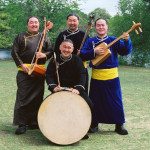
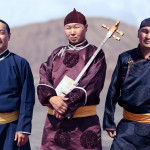


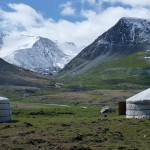

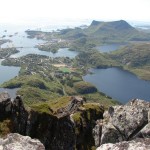


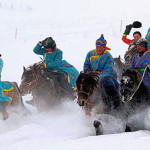
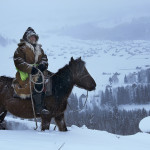


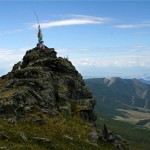
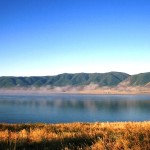
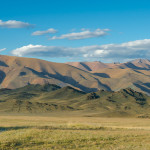
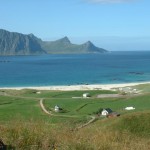



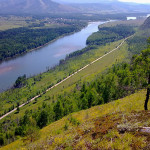
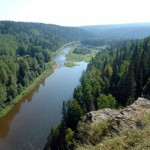
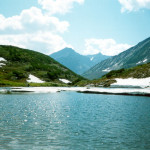
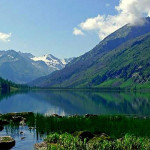

I have recently taken an interest in throat singing and would love the opportunity to visit Tuva and see some of the masters singing live and in person!
Camila recently posted…How To Throat Sing Like A Tibetan Monk